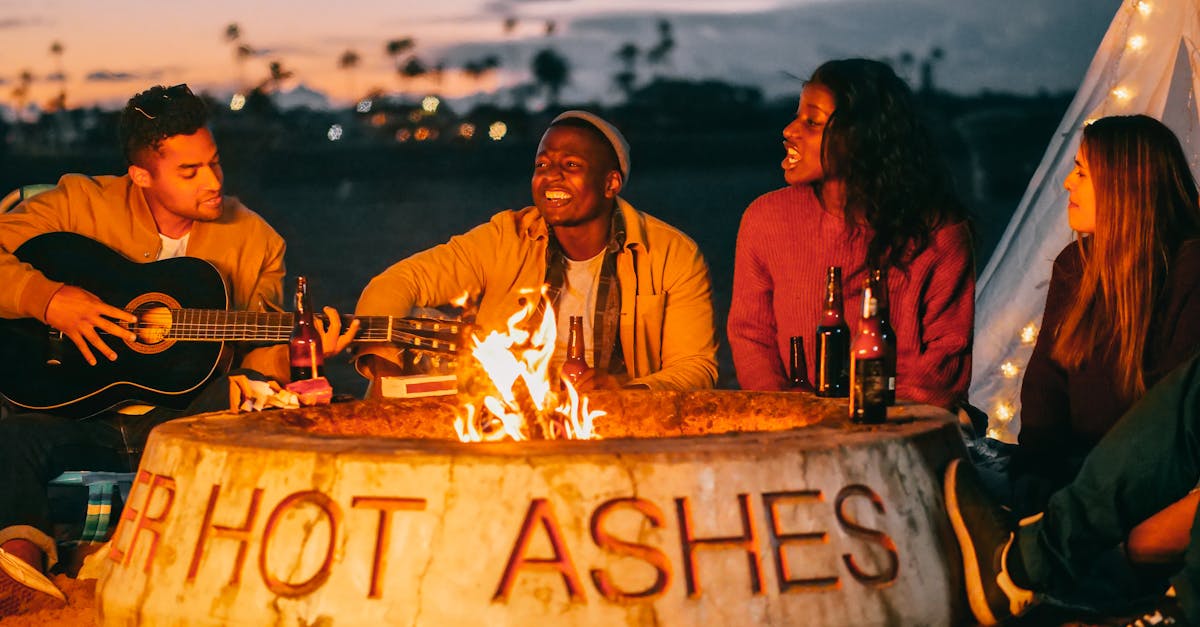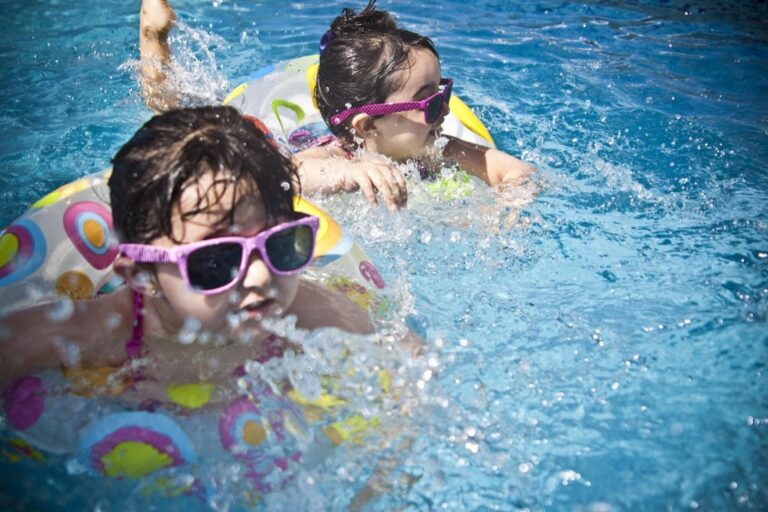7 Beach Fire Etiquette Tips That Preserve Paradise For Everyone
Discover 7 essential beach fire etiquette tips for your next gathering, from permit requirements to fire safety, proper setup, and respecting fellow beachgoers while protecting the environment.
Nothing beats gathering around a crackling beach fire with friends and family as the sun sets over the horizon. These memorable seaside celebrations require more than just marshmallows and good company—they demand respect for the environment and consideration for fellow beachgoers.
Before you light up your next beach bonfire, understanding proper etiquette isn’t just courteous—it’s essential for safety, environmental protection, and ensuring everyone can enjoy these special coastal spaces.
Disclosure: As an Amazon Associate, this site earns from qualifying purchases. Thank you!
Securing the Proper Permits and Understanding Local Regulations
Before you gather your friends for that perfect beach bonfire, you need to navigate the important legal requirements that govern beach fires. Different beaches have different rules, and ignoring them could result in hefty fines or even shut down your gathering completely.
Researching Beach Fire Policies Before Your Trip
Always check the specific beach’s fire regulations at least a week before your event. Many coastal areas completely prohibit open fires during dry seasons or have designated fire rings only. Visit the official county or state park websites for accurate information, or call the local ranger station directly for the most up-to-date policies and seasonal restrictions.
How to Obtain Necessary Permits
For beaches that allow fires, permits are often required and typically cost between $10-25. Apply online through the county parks department or on-site at ranger stations at least 48 hours in advance. During peak summer months, permits may sell out weeks ahead, so don’t wait until the last minute. Always carry your permit with you during your beach gathering as rangers regularly patrol popular fire spots.
Choosing the Ideal Location for Your Beach Fire
Finding the perfect spot for your beach bonfire is crucial for both safety and enjoyment. The right location ensures your gathering stays memorable for all the right reasons.
Safe Distances from Vegetation and Structures
Always position your beach fire at least 15 feet away from any vegetation, driftwood piles, or wooden structures. This buffer zone prevents accidental spreading as sparks can travel surprisingly far on coastal breezes. Look for clear, sandy areas without nearby seagrass, beach shrubs, or overhanging trees that could catch fire. Remember that what seems like a safe distance can quickly become dangerous if winds increase.
Considering Tide Patterns and Wind Direction
Check local tide tables before selecting your fire spot—you don’t want the rising tide to extinguish your fire prematurely or force a rushed relocation. Position your fire with the prevailing wind blowing away from your group and toward the ocean. This prevents smoke from constantly blowing into guests’ faces and reduces the risk of embers traveling toward combustible materials. Strong offshore winds may require postponing your fire entirely for safety.
Gathering Appropriate Materials for a Responsible Fire
Preparing for a beach bonfire requires thoughtful selection of materials to ensure safety and environmental responsibility. The right supplies will make your gathering enjoyable while minimizing impact on the beach ecosystem.
Selecting the Right Wood and Fuel Sources
Always use untreated firewood purchased from local stores near the beach. Avoid collecting driftwood, which provides crucial habitat for beach ecosystems. Hardwoods like oak or maple burn longer and produce less smoke than softwoods. Never burn trash, plastics, or pressure-treated lumber that release toxic chemicals. Consider bringing a fire starter log for easier ignition, especially in windy beach conditions.
Essential Safety Equipment to Bring Along
Pack a portable fire extinguisher and at least 2 gallons of water specifically for dousing flames. Bring a metal bucket for collecting hot embers and a sturdy shovel for managing the fire. Heat-resistant gloves protect hands when adding wood or adjusting burning logs. A first aid kit with burn treatment supplies is non-negotiable. Consider wind screens if your beach location is prone to gusty conditions that could spread sparks.
Building and Maintaining a Controlled Beach Fire
Proper Fire Pit Construction Techniques
Start by digging a pit 1-2 feet deep and 3-4 feet wide, creating a circular depression in the sand. Surround the perimeter with larger rocks to contain embers and prevent spreading. Always build your fire pit below the high tide line but above the current water level. Leave at least 6 inches between your wood and the pit edge to prevent collapse during burning.
Monitoring Flame Size and Spark Control
Keep your beach fire at a moderate height—no taller than 2 feet—to prevent sparks from traveling on wind currents. Assign a designated “fire monitor” who remains sober and responsible for watching flame activity. Regularly check for flying embers, especially during sudden wind gusts. Add new wood gradually rather than all at once to maintain consistent flame control and reduce smoke that might disturb nearby groups.
Respecting Other Beachgoers During Your Gathering
Managing Noise Levels and Music
Keep your beach bonfire gathering’s volume reasonable, especially after sunset when sound carries farther over water. Set speakers to face your group rather than outward, and maintain music at conversation level. Remember that natural beach sounds—crashing waves and crackling fire—often create the best atmosphere without disturbing neighboring groups.
Sharing Beach Space Considerately
Position your gathering at least 30 feet from other groups to respect their privacy and experience. Keep pathways to the water clear and avoid spreading out belongings unnecessarily. When people walk near your area, temporarily pause games like frisbee or volleyball. This spatial awareness ensures everyone enjoys their beach time without conflict or crowding issues.
Practicing Proper Food and Drink Management
Secure Waste Disposal Methods
Always bring designated trash bags and secure containers specifically for food waste at your beach fire gathering. Place these containers at least 15 feet from your fire pit to prevent accidental melting or ignition. Designate one trash bag for recyclables and another for general waste, ensuring all packaging, food scraps, and bottle caps are collected before leaving. Remember that ocean winds can quickly scatter lightweight items, so secure your trash with heavy items like coolers.
Preventing Wildlife Attraction
Store all food in sealed, wildlife-resistant containers when not actively serving or eating. Scented items like citronella candles, sunscreen, and food packaging can attract seagulls, raccoons, and other coastal wildlife. Clean spills immediately using water and sand to absorb liquid residue. Never bury food scraps in the sand—animals will dig them up, potentially spreading harmful waste across the beach. Instead, pack out everything you bring, including fruit peels and seemingly “biodegradable” items.
Stay protected from the sun with Neutrogena Ultra Sheer SPF 70 Sunscreen. Lightweight, non-greasy, and water-resistant formula.
Ensuring Complete Fire Extinguishment and Beach Restoration
By following these seven beach fire etiquette tips you’ll create memorable experiences while preserving our beautiful coastlines. Remember that responsible fire practices aren’t just about following rules—they’re about respecting nature and fellow beachgoers.
Your beach bonfire can be both magical and environmentally friendly when you plan properly. Obtain permits check tide patterns build appropriate fire pits and always maintain awareness of your surroundings.
Before leaving completely extinguish your fire with water not sand and pack out everything you brought in. The beach should look as if you were never there.
Take these practices with you to every beach gathering and you’ll help ensure these special coastal traditions continue for generations to come.
Frequently Asked Questions
Do I need a permit for a beach bonfire?
Yes, most beaches require permits for bonfires. Check local regulations at least a week before your event, as rules vary by location. Permits typically cost between $10-25 and should be secured in advance to avoid disappointment. Some popular beaches limit the number of daily fire permits, so early application is recommended.
Where should I position my beach fire?
Place your fire at least 15 feet away from vegetation, driftwood, and structures. Check local tide patterns to ensure rising water won’t reach your fire pit. Position the fire so wind blows smoke away from your group. The ideal location balances safety with a good view and comfortable seating area for guests.
What materials should I use for my beach fire?
Use untreated firewood purchased from local stores—never driftwood, which is important for beach ecosystems. Hardwoods like oak or maple are best as they burn longer with less smoke. Avoid using accelerants like gasoline, which can be dangerous and are often prohibited. Bring your own wood rather than collecting it from the beach.
What safety equipment should I bring?
Essential safety items include: a portable fire extinguisher, water for dousing flames, a metal bucket for hot embers, a sturdy shovel, heat-resistant gloves, and a first aid kit. For windy conditions, bring a portable wind screen. Having these items readily available ensures you’re prepared for any situation.
How do I build a proper beach fire pit?
Dig a pit 1-2 feet deep and 3-4 feet wide. Surround it with larger rocks to contain embers. Build the pit below the high tide line where permitted. Start with smaller kindling before adding larger logs. Keep the flame at a manageable height—typically no more than 2 feet tall—to prevent sparks from traveling.
How can I be respectful to other beachgoers?
Keep noise and music at reasonable levels, especially after sunset. Position speakers facing your group, not outward. Set up at least 30 feet from other groups and keep pathways clear. Pause games when people walk nearby. Remember that beaches are shared spaces—your consideration enhances everyone’s experience.
How do I properly manage food and drinks at a beach bonfire?
Bring designated trash bags and secure containers for food waste, positioned at least 15 feet from the fire pit. Store food in sealed containers to prevent wildlife attraction and clean spills immediately. Pack lightweight, easy-to-transport snacks that generate minimal waste. Always take all trash with you when leaving.
How do I safely extinguish a beach fire?
Start extinguishing the fire 30 minutes before you plan to leave. Gradually douse flames with water, not sand, which can insulate heat and create hazards for barefoot beachgoers. Stir the wet ashes to ensure all embers are extinguished. The pit should be cool to the touch before you depart.
Can I have alcohol at my beach bonfire?
Many beaches prohibit alcohol consumption. Check local regulations before bringing any alcoholic beverages. If allowed, use unbreakable containers, drink responsibly, and never leave empty containers behind. Designate a sober person to monitor the fire and ensure everyone gets home safely.
What’s the best way to leave the beach after my bonfire?
Follow the “leave no trace” principle: take everything you brought, including all trash and leftover firewood. Fill in your fire pit if you dug one. Ensure no trace of food remains that might attract wildlife. A final sweep of your area ensures the beach remains pristine for future visitors.






